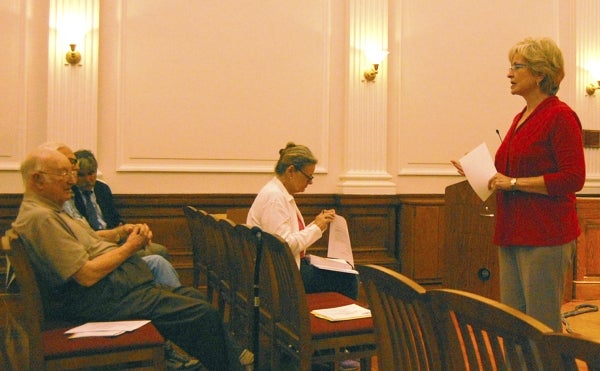Everyone’s an expert, state education superintendent says
Published 12:00 am Friday, July 24, 2015

- State Superintendent Dr. June Atkinson addresses the Rowan County Democratic Party Thursday afternoon. Jeanie Groh/Salisbury Post
By Jeanie Groh
jeanie.groh@salisburypost.com
N.C. Superintendent of Public Instruction Dr. June Atkinson joined the Rowan County Democratic Party Thursday evening to talk about how public education is funded.
“I always do my best to speak to any groups that want to hear about public education,” Atkinson said, adding, “public education is critical to all North Carolinians.”
Atkinson said that everyone is an expert on education.
“We all can go back to our own experiences,” she said, but added that few people understand the finances that go into running the state’s schools.
Under the state Constitution, the General Assembly is responsible for making sure there is “adequate funding for public education,” Atkinson said.
“It is the responsibility of the state – the general assembly – to provide money,” she added.
“There are three buckets of money for public education in North Carolina,” she said. “The biggest bucket is from the General Assembly.”
Local, or county, funding accounts for 25.2 percent of funding for North Carolina public schools, and 11.7 percent of funding comes from the federal government. The General Assembly provides 62.1 percent – roughly $8 billion – of funding for North Carolina public schools.
“That seems like a lot of money until you break it down per student,” she said.
Although North Carolina has spent more money on public education recently than in the past, they actually spent less per student.
North Carolina has roughly 1.5 million public school students, and Atkinson said the state gained 14,000 students last year, and is expected to gain 17,000 next year.
Atkinson said it’s hard to pinpoint exactly how much money is allotted to each student.
“How much per student depends on the student,” she said, adding that students that are low-income or classified as Exceptional Children receive more funding than others.
Atkinson went on to explain how the money received by the state is categorized.
State funding is organized into three different pots: positions; categorical allotments, such as Exceptional Children, career and technical education; or transportation.
Atkinson said there’s still a lot of uncertainty concerning the state’s budget, particularly concerning public education, for the 2015-16 fiscal year.
There’s a $343 million difference between funding for education in the Senate’s proposed budget and the House’s proposed budget.
The House’s proposition includes funding for teacher assistants, more money for textbooks and funding for connectivity. The Senate’s budget proposes eliminating teacher assistant positions to reduce class sizes.





